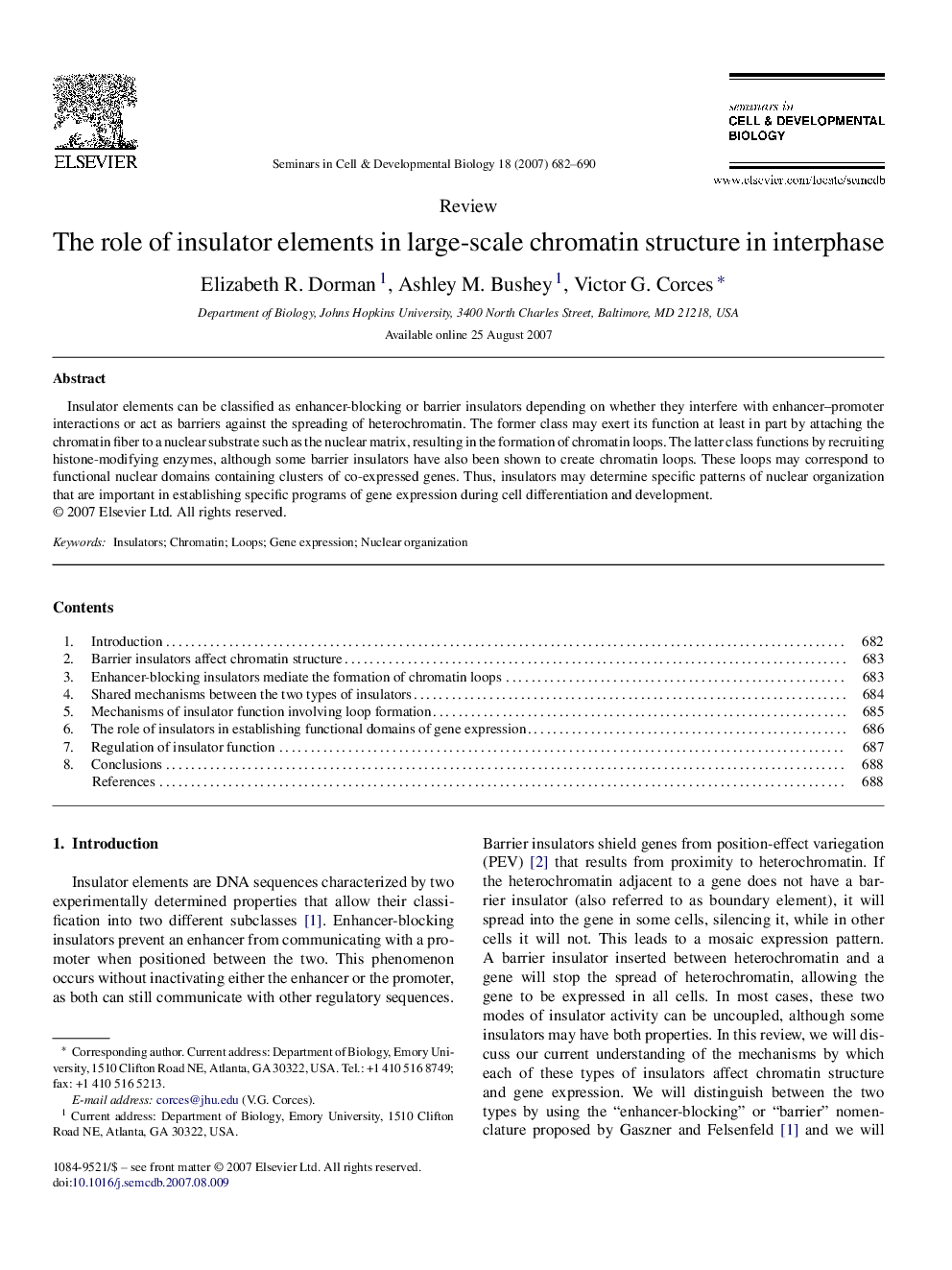| Article ID | Journal | Published Year | Pages | File Type |
|---|---|---|---|---|
| 10959307 | Seminars in Cell & Developmental Biology | 2007 | 9 Pages |
Abstract
Insulator elements can be classified as enhancer-blocking or barrier insulators depending on whether they interfere with enhancer-promoter interactions or act as barriers against the spreading of heterochromatin. The former class may exert its function at least in part by attaching the chromatin fiber to a nuclear substrate such as the nuclear matrix, resulting in the formation of chromatin loops. The latter class functions by recruiting histone-modifying enzymes, although some barrier insulators have also been shown to create chromatin loops. These loops may correspond to functional nuclear domains containing clusters of co-expressed genes. Thus, insulators may determine specific patterns of nuclear organization that are important in establishing specific programs of gene expression during cell differentiation and development.
Related Topics
Life Sciences
Biochemistry, Genetics and Molecular Biology
Cell Biology
Authors
Elizabeth R. Dorman, Ashley M. Bushey, Victor G. Corces,
